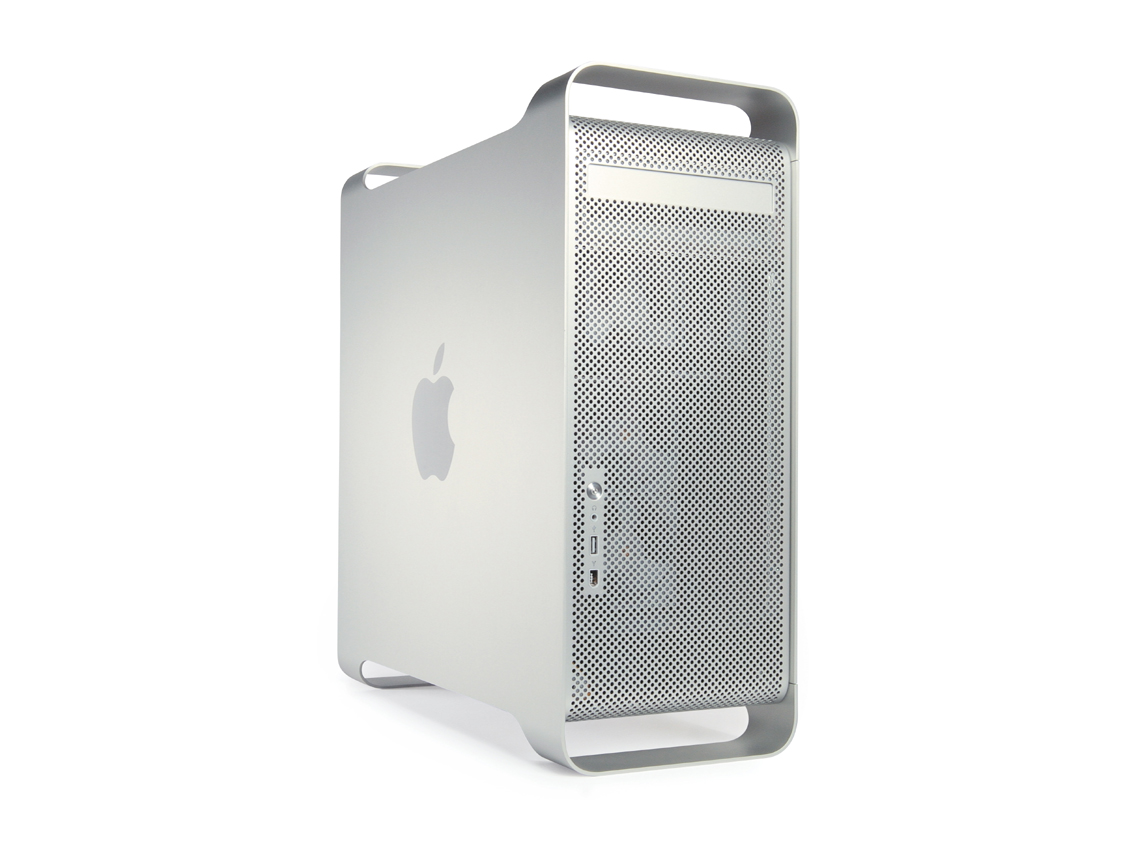TechRadar Verdict
The Dual 2.7GHz Power Mac is brawny, bold and blazing - even if there's no Intel inside
Pros
- +
Fastest Mac yet
Double-layer DVD
Liquid cooling
Cons
- -
Relatively noisy
PowerPC architecture
Why you can trust TechRadar
A month or two ago we would all have been drooling over this latest Power Mac with its 2.7GHz twin PowerPC processors. It's a real monster of a Mac and at the top of Apple's tree. However, a month on and Steve Jobs has dropped his Intel bombshell.
So now we look at this new speed demon and instead of seeing a thrusting, cutting-edge Power Mac that's ideal for video editing or 3D rendering, we see a lame duck. But that's human nature, isn't it? A month ago this was the fastest Mac on earth and now that Steve Jobs says he's switching processors we look at it and think... museum piece!
But that's not the line we're taking here. Oh no. Our reason for this, is it's all about looking at the facts: this new dual 2.7GHz Power Mac G5 is still a brilliant machine which supplants the dual 2.5GHz Power Mac G5 as Apple's top-of-the-line Power Mac.
In fact, the 2.5GHz dualie is no longer in Apple's product line, and the dual 2.7GHz Power Mac is joined by a dual 2.3GHz Power Mac (£1,699), dual 2GHz Power Mac (£1,349), and single 1.8GHz Power Mac (£999). The specs speak for themselves.
On the surface, this newest Power Mac G5 doesn't look all that different from previous models; it still has the striking aluminium case and the same number of connectors (three USB 2.0, one FireWire 800, two FireWire 400, optical audio input and output, analog audio input and output).
Full-fat G5
But it's what's inside that counts. The processors are faster, each with a 1.35GHz frontside bus - and it's that frontside bus that matters, as owners of the old single processor 1.8GHz G5s will testify. All Power Macs now come with a stock 512MB of RAM - a real improvement, but we still recommend you boost your RAM to 1GB.
Power Macs need memory adding in pairs, so you'll have to buy a couple of 512MB sticks or two 256MBs. The stock Serial-ATA hard drive jumps from 160GB to 250GB, while the SuperDrive is now rated at 16x and can burn double-layer DVDs.
The video card, a 256MB ATI Radeon 9650 with one singlelink and one dual-link DVI port, supports Apple's massive 30- inch Cinema Display. If you want to run a pair of the 30-inchers (and make us all very jealous and your bank manager very cross), you'll need to pay £398 to upgrade to the NVIDIA GeForce 6800 Ultra DDL.
Other internals remain essentially the same as the erstwhile 25GHz dualie: liquid cooling; three full-length PCI-X slots (one 133MHz 64-bit slot and two 100MHz 64-bit slots); and optional AirPort and Bluetooth - though Apple now uses Bluetooth Core Specification Version 2.0 EDR (Enhanced Data Rate), which has better speed and improved error correction.
The dual 2.7GHz Power Mac is faster than the dual 2.5GHz Power Mac (well, duh...), but the improvement varies by task. We saw a 16% speed increase when performing a Photoshop CS2 action on a 100MB file, while we only noted an 8% increase when exporting a file to PDF in InDesign CS2. Exporting a movie in iMovie HD went 26% faster, and creating a DVD image in iDVD went 17% faster.
Both Power Macs performed similarly when importing Alex Wise's Front Porch music CD in iTunes or running Unreal Tournament 2004's flyby and botmatch tests. We ran all of our tests with the processor performance set to Highest in System Preferences > Energy Saver > Options.
As we mentioned earlier, the dual 2.7GHz Power Mac is liquid cooled, and our experience with this cooling system doesn't differ that much from its implementation in the dual 2.5GHz Power Mac. During CPU-intensive tasks, the fans make a lot of noise; you won't notice it if the Power Mac sits under your desk, but if it's on top, you may mistake a busy Power Mac for Heathrow airport. Roman Loyola
Tech.co.uk was the former name of TechRadar.com. Its staff were at the forefront of the digital publishing revolution, and spearheaded the move to bring consumer technology journalism to its natural home – online. Many of the current TechRadar staff started life a Tech.co.uk staff writer, covering everything from the emerging smartphone market to the evolving market of personal computers. Think of it as the building blocks of the TechRadar you love today.
